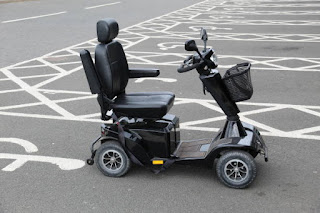Choosing the Best Walker
Walkers, which have four legs and a large base of their own, give much of the same support as rollators. The main distinction between rollators and walkers is that rollators have larger wheels and are fully wheeled. While walkers may have wheels, they only have them on two of the four legs
Most rollators also include additional amenities that walkers do not, such as a seat, backrest, and handbrakes.
What is a Rollator?
rollator, also known as rolling walkers, are mobility devices with three to four legs and a support base that gives stability to both sides of the body at the same time. They have wheels at the ends of each leg for easy maneuvering and frequently include a seat for a comfortable spot to relax.
Rollators can provide the balance and stability needed by people in danger of falling and can support body weight more evenly than other devices such as canes. You could benefit from using a rollator if you:
● Have mild to moderate balance and stability difficulties
● Are recovering from surgery and need help supporting both sides of the body
● Find that walking causes fatigue and requires frequent breaks.
● Do not need to lean (bear weight) on the rollator for balance.
Pros:
● Supports both sides of the body
● Easy to handle over a variety of terrains
● Offers a comfortable place to rest when fatigued
● Foldable and portable
Cons:
● Requires considerable stability to operate properly
● Needs the use of both hands and feet
● Cannot be propelled by another person while seated
Points to Check OutBefore Buying a Rollator
So, which rollator is the best? There is no single "best rollator"; it all depends on your individual demands and preferences. To choose the best rollator for you, consider the following:
Rollator Specifications
● Three vs Four WheelsThree-wheel rollators are slimmer, with a smaller turning radius and the ability to fit through more passageways. As a result, many individuals choose them for indoor use. They're also lighter and more portable. However, with only three wheels, these rollators can be less stable and often lack a seat.
Rollators with four wheels are more regularly used. Although larger and heavier than three-wheeled walkers, they are much more stable and can support a wider variety of weights and heights. They also often provide a comfortable chair to sit on if you get tired of walking.
● Wheel Size
You also need to consider the diameter of the wheels. Usually, rollator wheels are somewhere between 6 and 10 inches in diameter, with wheels size of 8 inches or above considered large.
Many individuals find that the ideal rollator for them is one with bigger wheels. Larger wheels make it easier to maneuver the rollator outdoors and over rough terrain
If you plan to use your rollator walker primarily indoors, 6 to 7 inch wheels may be a better choice. Most of the time you will be traveling on flat ground and the smaller wheels have a tighter turning radius which is better for navigating inside.
● Seat
If you want a rollator with a seat, you should make sure it is comfy. Opt for a rollator with a cushioned or sling seat for maximum comfort. While unpadded plastic chairs are easy to clean, they can soon become uncomfortable to sit on.
You should also pay heed to the seat proportions. Measure your width while sitting on a level surface to ensure you get the proper rollator for you. To guarantee comfortable sitting, add an inch or two to this measurement.
● Seat to Floor Height
The seat-to-floor height, also known as seat height, should enable you to sit properly without hanging your feet. While standing in regular shoes, measure the distance from the ground to the crease at the back of the user's knee.
● Handle Height
To determine the proper handle height, the user must stand in their ordinary shoes, arms at their sides, and elbows slightly bent. While in this posture, measure the length between the ground and the middle of their wrist. This measurement will serve as the handle height for them. You may need to acquire a rollator designed particularly for taller or shorter folks.
● Overall Weightand Weight Capacity
Heavy-duty and bariatric rollators can often weigh a lot. On the other hand, A compact lightweight rollator is great for traveling. Rollator frames are often composed of aluminum, allowing them to weigh as little as 11 pounds.
The weight capacity of the rollator should also be evaluated to ensure that it can securely support the user. Typical rollators can hold about 250 to 350 pounds. You may require a heavy-duty rollator, which typically has a weight capacity of 400 to 500 pounds.
● Rollator Accessories
In addition to the standard requirements, you should think about any accessories you might want or need for your rollator.
Most rollators have a storage basket or bag, so think about which one is ideal for you. Many individuals prefer a pouch since it collapses with the rollator and allows them to keep goods stored discretely. Other accessories might be purchased individually.
Conclusion
Many people can safely obtain the assistance they require from either a walker or a rollator. It is essentially a matter of personal preference for them. Most people choose rollators because of the extra convenience of the wheels and seat, although other people may prefer walkers.
Your physical condition, on the other hand, may necessitate the use of a rollator instead of a walker, or vice versa. Those with little upper body strength, for example, may find it difficult to carry a walker and may benefit more out from a rollator they can push. It is critical to understand that rollators are not built to be used for long distance transportation. Instead, users can look for electric wheelchairs for sale or mobility scooters for sale.


.jpg)

Comments
Post a Comment